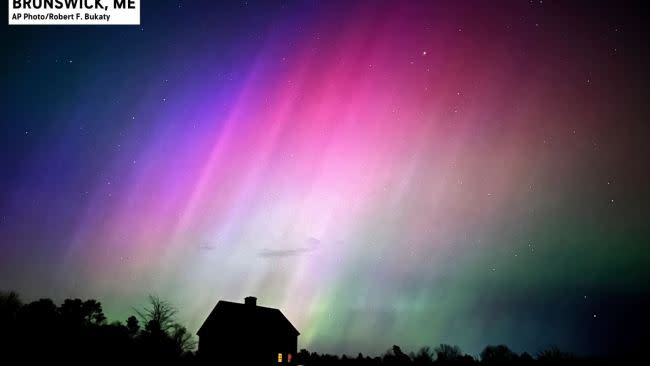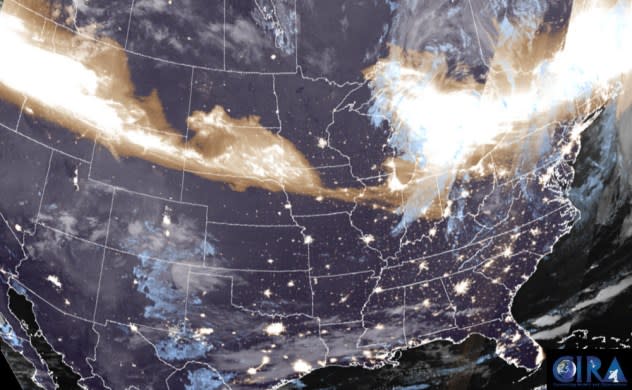Northern lights create jaw-dropping show, best in over 20 years
Countless people stepped outside on Friday night to see the glow of the northern lights for the first time in their lives as the strongest geomagnetic storm in over two decades hit the Earth.
In the United States, the aurora borealis was seen as far south as Florida, the Gulf Coast states, Hawaii and Puerto Rico, where red hues illuminated the sky. The most impressive views occurred across the northern half of the country, where shades of green, red, pink and purple danced overhead.
The Northern Lights created a jaw-dropping show across America on Friday night in all 50 states 🤩🤩 https://t.co/BAI9wWsVlp pic.twitter.com/KXVr8aVFGA
— AccuWeather (@accuweather) May 13, 2024
According to NOAA's Space Weather Prediction Center (SWPC), the geomagnetic storm responsible for the aurora reached G5, a level 5 out of 5, making it the strongest event in 21 years. The SWPC warns on its site that storms of this magnitude could disrupt power systems, GPS and spacecrafts in orbit, but no significant issues were reported.
The last time the northern lights were seen across such a widespread area was in 2003, before the age of smartphones and social media.
The impressive light show was not limited to North America. People all around the world reportedly saw the lights, including in Europe, India, China and the Bahamas.
In the Southern Hemisphere, the aurora australis was also sighted in Australia, New Zealand, Tasmania and parts of Africa and South America.
Satellites in space had a bird's-eye view of the rare spectacle, with the brightest lights being detected over the Northeast, Great Lakes and northern Rockies.
 |
In this polar-orbiting satellite view, the city lights of major towns are seen with aurora (brown to white) over the Midwest and Northeast on Friday, May 10, 2024. (NOAA/CIRA) |
Crowds traveled to dark areas on Saturday night and Sunday night with hopes of catching a repeat performance of the aurora, but an encore failed to unfold as the geomagnetic storm that sparked the aurora on Friday night gradually subsided as the weekend progressed.
Similar to the seasons on Earth, the sun goes through a regular cycle that lasts approximately 11 years. The sun is currently near the height of the cycle, known as solar maximum, when activity on the sun results in more opportunities to see the aurora. While another event like Friday night's aurora is not in the immediate future, similar events could occur in the coming months.
Want next-level safety, ad-free? Unlock advanced, hyperlocal severe weather alerts when you subscribe to Premium+ on the AccuWeather app. AccuWeather Alerts™ are prompted by our expert meteorologists who monitor and analyze dangerous weather risks 24/7 to keep you and your family safer.


